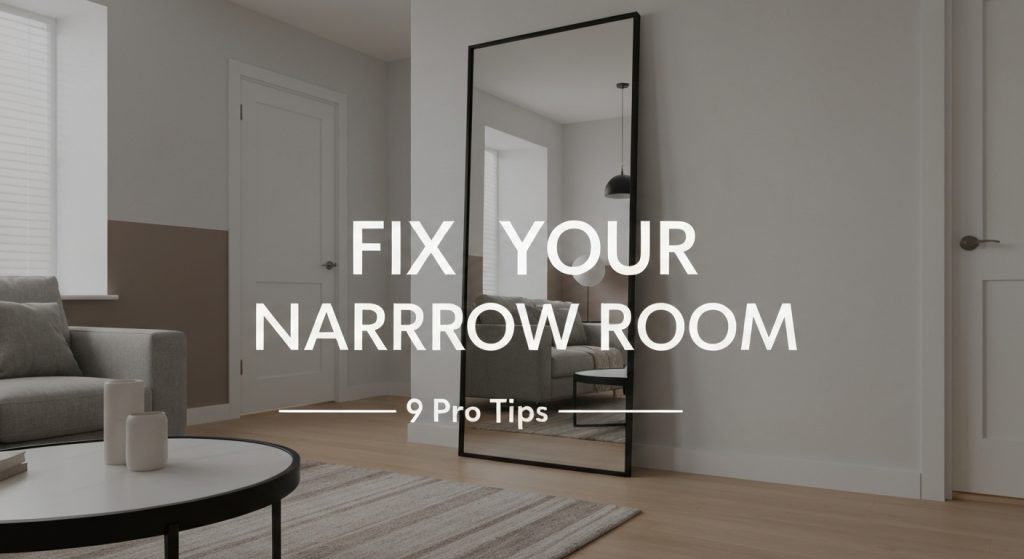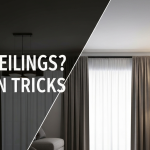Living with a long, narrow room can feel like you’re constantly trying to decorate a hallway. You know the feeling—the “bowling alley” effect where furniture gets pushed against the walls, creating an awkward, tunnel-like space. It’s a common challenge in apartments and older homes, making it tricky to create a cozy, functional, and balanced environment. The good news is that you don’t need to knock down walls to fix it. With a few smart design strategies, you can trick the eye and transform that awkward layout into a beautiful and inviting space.
My name is William Johnson, and for years, I’ve been fascinated by how simple changes in layout and decor can completely alter the feel of a home. My passion isn’t just about what looks good, but why it works. I’ve spent countless hours in spaces of all shapes and sizes, testing theories and seeing firsthand how a round coffee table or a strategically placed mirror can solve a design puzzle. Through my writing, I aim to share what I’ve learned, breaking down design principles into clear, practical advice that anyone can use to make their home more enjoyable.
Understanding the Core Challenge: The Tunnel Effect
Before we dive into the solutions, let’s quickly understand the problem. A long, narrow room naturally pulls your eyes down its length to the far wall. This creates a sense of imbalance and movement, which is the opposite of the calm, settled feeling you want in a living room or bedroom. Our goal is to interrupt that long sightline and encourage the eye to move side-to-side, creating an illusion of width and balance. Every tip that follows is designed to do just that.
1. Create Distinct Zones to Break Up the Length
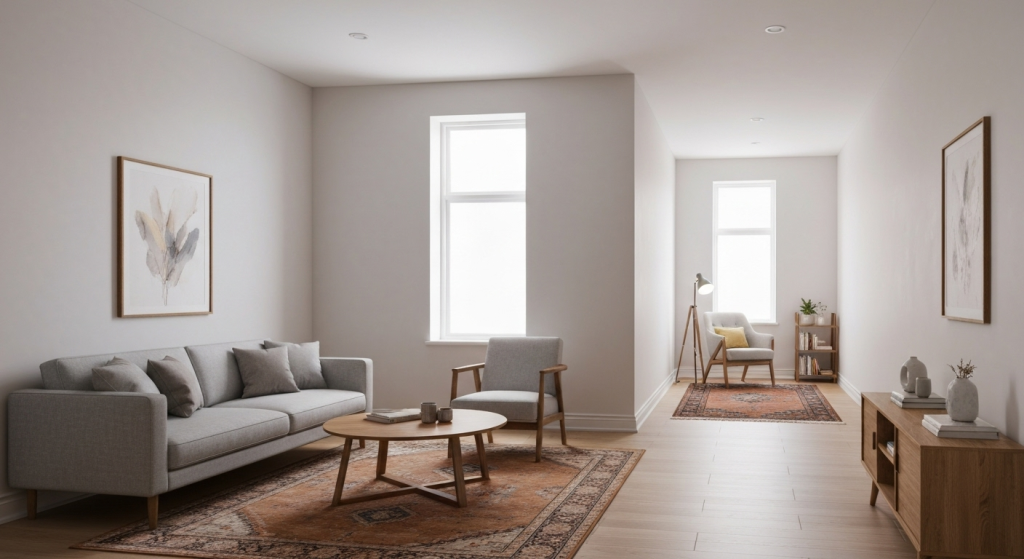
The single most effective strategy for correcting a narrow room is to stop treating it as one single space. Instead, break it up into smaller, functional zones. This interrupts the long, straight path and makes the room feel more purposeful and square.
In my work with these types of layouts, I’ve found that creating at least two distinct zones is a game-changer. For a living room, this could be:
- A Main Conversation Area: This is your primary zone. Float a sofa and a couple of armchairs in the middle of the room, facing each other over a coffee table. This forces you to use the width of the room rather than just its length.
- A Secondary Zone: At one end of the room, create a smaller, separate area. This could be a reading nook with a comfy chair and a lamp, a small home office desk facing the wall, or a simple console table with art above it.
By defining these areas with furniture and rugs, you give the eye different places to stop. This prevents the “bowling alley” effect because you’re no longer looking down an empty runway. You’ve created points of interest that fill the space thoughtfully.
How to Define Your Zones
- Area Rugs: Use a separate, smaller rug for each zone. This visually anchors the furniture in each area and signals that it’s a distinct space.
- Furniture Grouping: Cluster furniture together. The conversation area furniture should be grouped tightly, while the reading chair and lamp form their own little vignette.
- Lighting: Use a pendant light or a floor lamp to define a zone. A lamp next to a chair instantly creates a “reading spot.”
2. Choose Furniture That Fights the “Tunnel”
The furniture you choose has a massive impact on the room’s perceived proportions. Big, bulky pieces lined up against the long walls will only emphasize the narrowness. The key is to select pieces that add width and don’t block the visual flow.
Go for Curves:
Round shapes are your best friend in a narrow room. They soften the harsh, straight lines of the walls and encourage your eye to flow around them rather than straight past them. For years, I’ve recommended round coffee tables, circular side tables, or curved armchairs to clients with long rooms. The effect is immediate; the room feels less rigid and more open.
Leggy Furniture is a Must:
Choose furniture with exposed legs, like a mid-century modern sofa or a console table on slender legs. When you can see the floor underneath furniture, it creates an illusion of more space. The room feels lighter and airier, which helps counteract the closed-in feeling of a narrow layout.
Furniture Shape Comparison
| Furniture Piece | Best Shape for a Narrow Room | Why It Works | Worst Shape for a Narrow Room | Why It Fails |
| Coffee Table | Round or Oval | Softens the room’s lines and allows for easier traffic flow around it. | Long, Rectangular | Accentuates the length of the room and acts like an arrow pointing down the “tunnel.” |
| Sofa | Low-profile with visible legs | Keeps the visual plane open and makes the room feel less crowded. | High-backed, Skirted Sofa | Looks heavy and bulky, visually shrinking the available floor space. |
| Accent Chairs | Armless or with curved backs | Takes up less visual space and adds a soft, organic shape to the layout. | Bulky, Square Club Chairs | Can feel like blocks in the room, making it hard to navigate and emphasizing rigidity. |
3. The Rug Trick: Laying the Foundation for Width
This is one of the simplest and most effective tricks in the book. Most people instinctively buy a runner or a long, narrow rug that mirrors the shape of the room. This is a mistake—it only reinforces the tunnel effect.
Instead, you need to place your rug horizontally. This means the longest side of the rug should run perpendicular to the longest wall. By doing this, the rug’s pattern and shape draw the eye across the width of the room, making it feel wider instantly.
For instance, in a 10-foot by 20-foot living room, don’t use a 6×9 rug with the 9-foot side running parallel to the 20-foot wall. Instead, choose a rug that is wide enough to anchor your main furniture grouping, like an 8×10 rug. Place the 10-foot side of the rug so it runs across the 10-foot width of the room. It may seem counterintuitive, but it works wonders. All the front legs of your sofa and chairs in the main seating area should rest on this rug to create a unified, cohesive zone.
4. Master the Art of Illusion with Mirrors
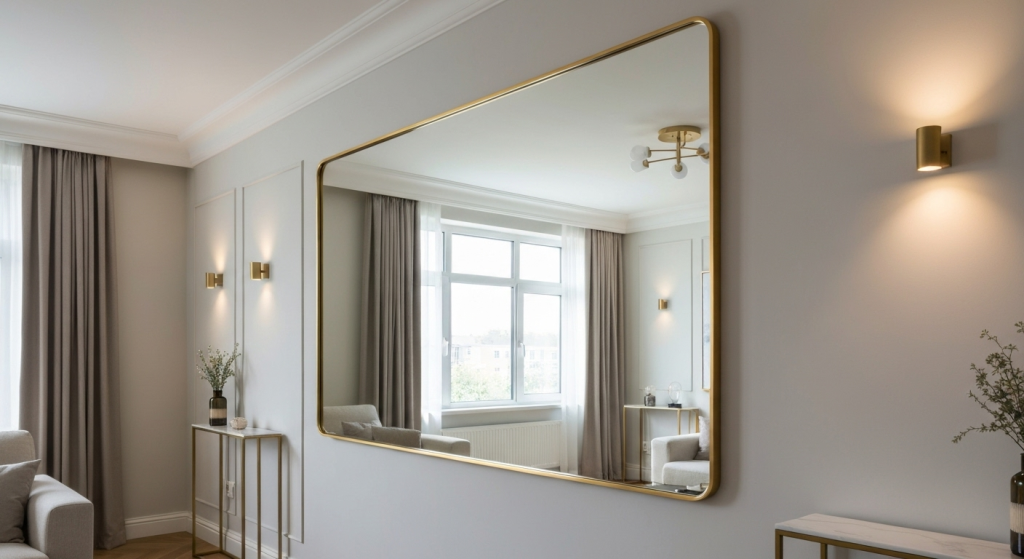
Mirrors are a classic tool for making any space feel larger, but in a long, narrow room, their placement is critical.
Don’t place a mirror on the short end wall. This will only reflect the length of the room, making the tunnel seem even longer. I’ve seen this mistake made many times, and it completely backfires.
The Correct Placement: Hang a large mirror on one of the long walls. This is the secret. A big mirror here will do two things:
- Reflect the Opposite Wall: This creates a powerful illusion of depth, effectively pushing the walls apart and making the room feel significantly wider.
- Bounce Light: If you can place it across from a window, it will amplify the natural light, making the entire space feel brighter and more open.
You can use a single, oversized statement mirror or create a gallery wall of smaller mirrors. Either approach will break up the monotony of the long wall and add that much-needed sense of width.
5. Paint and Color: Your Secret Weapons
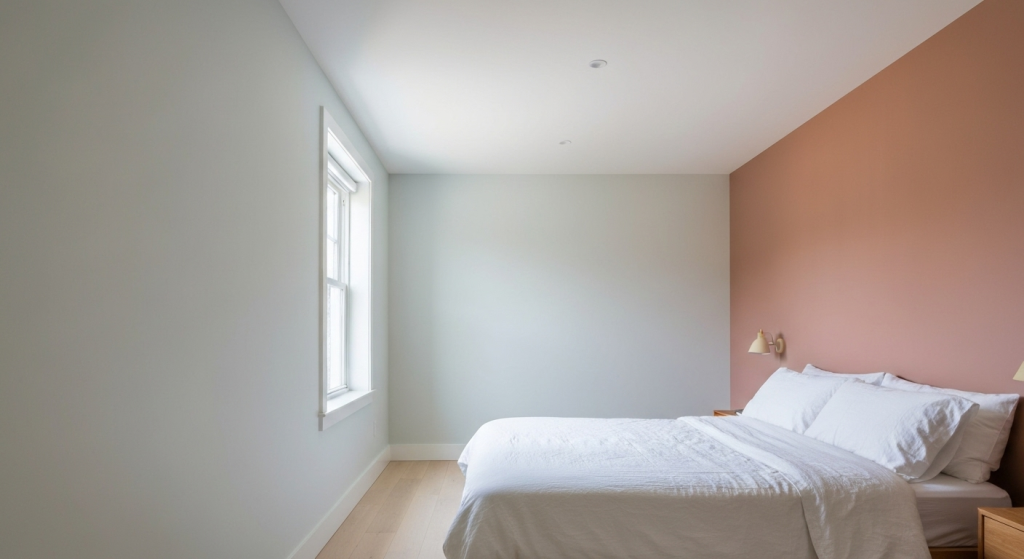
Paint is an inexpensive yet powerful tool for reshaping a room. The common advice is to use light colors, which is true, but we can be more strategic than that.
The Two-Tone Approach:
To visually correct the room’s proportions, paint the two long walls a light, neutral color like off-white, light gray, or a soft beige. Then, paint the two shorter end walls a slightly darker or warmer shade—perhaps two or three shades darker on the same paint strip.
What this does is visually “pull” the shorter walls inward, making the room feel more square-shaped. The darker color on the far wall will appear closer, which helps to counteract the room’s extreme length.
Consider a Horizontal Stripe:
For the bold decorator, another trick I’ve seen work well is painting wide, horizontal stripes on the short end walls. The horizontal lines draw the eye from side to side, creating a strong illusion of width. Stick to a low-contrast palette (like white and a very light gray) to keep the look sophisticated rather than overwhelming.
6. Guide the Eye with Smart Lighting
A single overhead light in the center of a long room will create shadows at the ends and make the space feel like a cave. Good lighting should create pools of light that draw attention to different zones and add warmth throughout the space. This is called “layered lighting.”
- Ambient Lighting: Start with a flush-mount ceiling light or a couple of track lights that can be aimed to wash light across the walls, not just down the center.
- Task Lighting: Place floor lamps or table lamps in your designated zones. A floor lamp next to an armchair in your reading nook not only provides light for reading but also anchors that zone. Table lamps on side tables in the seating area create a cozy, intimate glow.
- Accent Lighting: Use small spotlights or picture lights to highlight artwork on the walls. This creates points of interest and encourages people to look around the room rather than straight ahead.
The goal is to have multiple light sources at different heights. This adds dimension and makes the room feel more dynamic and balanced.
7. Rethink Your Walls: Artwork and Decor
Just like with mirrors, the placement of your artwork can either help or hurt. Avoid hanging a single, small piece of art in the center of a vast, long wall. This will only make the wall feel even longer and emptier.
Go Big on the Short Walls:
Place a large, bold piece of art or create a full gallery wall on one of the short end walls. This creates a powerful focal point that commands attention, stopping the eye from traveling down the length of the room. It gives the room a destination and makes the short wall feel more significant.
Use Horizontal Art on Long Walls:
If you are putting art on the long walls, choose pieces that are wider than they are tall (landscape orientation). A series of three matching horizontal frames or one long panoramic piece will emphasize width.
8. Widen Your Windows (Visually)
If you have windows on one of the long walls, you can use them to your advantage. The trick is to make them appear wider than they actually are.
To do this, install your curtain rod so it extends at least 6-12 inches beyond the window frame on each side. When the curtains are open, they will stack back against the wall, not in front of the glass. This exposes the entire window, maximizing natural light, and the extra width of the curtain rod tricks the brain into thinking the window itself is much wider. Hang the rod high, close to the ceiling, to add a sense of height as well.
9. Create a Clear, Meandering Path
Finally, think about traffic flow. In a narrow room, it’s tempting to create a straight path down one side, but this reinforces the “hallway” feeling.
Instead, arrange your furniture to create a slightly winding, or meandering, path through the room. For example, the path might curve around your main seating area and then straighten out as it approaches the secondary zone. This forces people to move through the space in a more interesting way and experience the different zones you’ve created. Ensure the path is at least 30-36 inches wide to be comfortable.
Do’s and Don’ts for Narrow Rooms: Quick Summary
| Do’s | Don’ts |
| ✅ Create distinct functional zones. | ❌ Line all furniture up against the walls. |
| ✅ Use round or curved furniture. | ❌ Use a long, narrow “runner” style rug. |
| ✅ Place rugs horizontally to add width. | ❌ Hang a mirror on the short end wall. |
| ✅ Hang large mirrors on the long walls. | ❌ Use a single, harsh overhead light. |
| ✅ Paint short walls a slightly darker color. | ❌ Create a straight, runway-like traffic path. |
| ✅ Use layered lighting at different heights. | ❌ Hang small, lonely art on the long walls. |
Frequently Asked Questions (FAQs)
What is the best sofa for a long, narrow living room?
An apartment-sized sofa with clean lines and visible legs is often a great choice. Avoid oversized, bulky sectionals that consume the entire width of the room. A loveseat paired with two armchairs can offer more flexible arrangement options than a single large sofa.
What color should I paint a long, narrow room to make it look wider?
Paint the two long walls a light, reflective color like off-white, soft gray, or a pale cool blue. Then, paint the shorter end walls a color that is two to three shades darker. This will make the short walls feel closer, helping to visually square up the room’s proportions.
How do I light a long narrow room?
Use a layered lighting approach. Avoid a single ceiling fixture in the center. Instead, use multiple light sources like track lighting aimed at the walls, floor lamps in corners or reading nooks, and table lamps on side tables. This creates balanced light and prevents dark, shadowy ends.
What’s the biggest mistake people make when furnishing a narrow room?
The most common mistake is pushing all the furniture against the two long walls. This creates an empty “runway” down the middle and emphasizes the room’s narrowness. The solution is to “float” furniture away from the walls, creating intimate groupings that use the room’s width.
Conclusion: Embrace the Opportunity
A long, narrow room isn’t a design flaw; it’s a creative opportunity. Instead of fighting its shape, you can work with it using these visual tricks to create a space that feels balanced, spacious, and wonderfully unique. By breaking up the length with distinct zones, choosing smart furniture, and strategically using color, light, and decor, you can transform that “bowling alley” into a welcoming and functional part of your home. It’s all about guiding the eye and correcting the proportions to create a room that feels just right.
